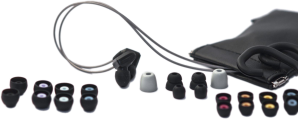The Unique Melody Miracles are a custom-moulded in-ear-monitor (or CIEM). There are many manufacturers making CIEMs – some cheaper, some more expensive. The Miracles are the top-of-the-line option from Unique Melody. I chose the Miracles after much research into these other options:
- JH Audio JH13
- JH Audio JH16
- Heir 8.A
Deciding to buy custom in-ears is a big decision. They’re expensive (but completely worth it), take a while to make, require a trip to an audiologist, and have lower resale value due to their custom-moulded nature. There’s also the chance that they won’t fit properly the first time around. For any lover of music, custom IEMs are a very worthwhile investment, but one that you need to make knowing the process that awaits…
Overview
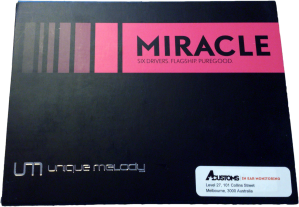 The UM Miracles are a 6-driver, 3-way design meaning that they use a total of 6 individual speaker units (called balanced armatures) inside each earpiece. The 6 drivers are combined in a 3-way configuration meaning that they are paired up to produce bass, mid-range, and treble (2 per frequency range). They are designed to produce a fairly neutral sound (i.e. no specific emphasis on any frequency range). Specifications are:
The UM Miracles are a 6-driver, 3-way design meaning that they use a total of 6 individual speaker units (called balanced armatures) inside each earpiece. The 6 drivers are combined in a 3-way configuration meaning that they are paired up to produce bass, mid-range, and treble (2 per frequency range). They are designed to produce a fairly neutral sound (i.e. no specific emphasis on any frequency range). Specifications are:
- Frequency range: 18 Hz – 19 kHz
- Impedance: 15.9 ohm
- Sensitivity: 114 dB SPL
 They arrive in a beautiful package and with a hard case, metal warranty card, and glass cube paperweight. It’s an impressive presentation. Admittedly, I don’t think many people will find use for the paperweight, but it’s beautiful and you can always just leave it in the box. Mine’s serving as a weight on the base of my headphone stand so it’s both purposeful and beautiful. The Miracles are supplied with the same cable as most other CIEMs on the market, the Westone Epic cable. It’s thin and supple with a nice right-angled jack to connect to your source units. Although not a world-beater by any stretch, it’s a perfectly serviceable cable, but there may be some longevity issues due to it’s thin design from what I have heard.
They arrive in a beautiful package and with a hard case, metal warranty card, and glass cube paperweight. It’s an impressive presentation. Admittedly, I don’t think many people will find use for the paperweight, but it’s beautiful and you can always just leave it in the box. Mine’s serving as a weight on the base of my headphone stand so it’s both purposeful and beautiful. The Miracles are supplied with the same cable as most other CIEMs on the market, the Westone Epic cable. It’s thin and supple with a nice right-angled jack to connect to your source units. Although not a world-beater by any stretch, it’s a perfectly serviceable cable, but there may be some longevity issues due to it’s thin design from what I have heard.
The Process
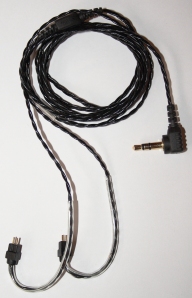 When you order any CIEMs there are a few steps to go through regardless of which brand and model you choose. For this part of the review, I am referring to all brands and models, not just the Miracles.
When you order any CIEMs there are a few steps to go through regardless of which brand and model you choose. For this part of the review, I am referring to all brands and models, not just the Miracles.
Design – decide on the colours and inserts you want for the tips, shells, and faceplates of your CIEMs. Most CIEM manufacturer sites have designer pages to help you choose. This is a big decision because once it’s done, you can’t change it without the time and expense of remoulding (basically having them remade f rom scratch). It’s a good idea to check around on forums and different manufacturers’ sites for images of CIEMs to see what looks good to you.
Impressions – next you’re off to the audiologist for them to take moulds of your ear canals and outer ear. This step takes about 30 minutes and is a little weird-feeling, but pretty straight forward.
Important note!!! When having your impressions taken, be sure to stay completely still and looking straight ahead (you might want to choose a spot on the wall to stare at for the whole time). Different companies recommend different mouth positions (i.e. open, closed, wide open, open & closed) so you may find variation in the instructions. Many audiologists will have bite blocks you can use to hold your mouth still in an open position. I found for the Miracles that a bit block around 1.5cm thick worked best. Importantly, the audiologist may forget to instruct you thoroughly so make sure you remind yourself of the steps provided by your CIEM company and stick to them or it could be a painful wait as you send your brand new CIEMs back to be redone.
Waiting – Once you send your completed impressions / moulds to the CIEM manufacturer, you’re in for a bit of a wait. It varies between manufacturers, but is always multiple weeks. In some cases though it can extend out to 6+ weeks so be prepared. It is a long time to be waiting for something so special to you, but it’s completely worth it.
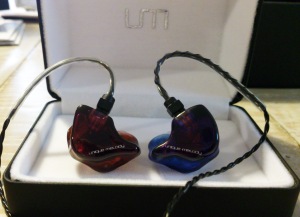 Receiving – The day does come eventually after what seems like forever. You open the packaging and excitedly try to put your new toys in your ears. Please note that a couple of things happen at this time:
Receiving – The day does come eventually after what seems like forever. You open the packaging and excitedly try to put your new toys in your ears. Please note that a couple of things happen at this time:
- They feel weird, difficult and uncomfortable to put in at first – this passes as you get more practiced
- They feel weird and possibly a little uncomfortable even when they’re properly inserted – this will settle down in most cases. Allow a couple of weeks or at least some extended listening sessions for your ears to adjust to having a foreign object inside the canal
- There is a chance they won’t fit properly and that the seal will be incomplete or will break easily. Don’t decide immediately while everything feels new and strange. Let your ears get used to the sensation and fit before deciding to return them for a refit because it’s another big decision that may require another trip to the audiologist and another long wait.
Hopefully, they fit first time around and you can just get on with enjoying them! When they do fit, here’s what you can expect from the Miracles. From here on, I am talking only about the Miracles and your experiences with other CIEMs may vary dramatically depending on the brand and model.
Build Quality & Design
The Miracles are made by Unique Melody, one of the more prominent custom manufacturers in the market along with Ultimate Ears (UE), Heir Audio and JH Audio to name a few. The Miracles are beautifully made and well finished. There are a pair of tiny dimples in the faceplate of my left earpiece, but they’re only visible under the right lighting and at a certain angle so really not worth worrying about. All-in-all the Miracles arrive beautifully finished and without any bubbles, cracks, seams, or any other significant flaws in the acrylic. They feel sturdy and solid.
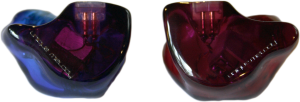 As you can see from the images, I chose to get red and blue shells (right and left respectively) with purple faceplates on both. I asked for the silver Unique Melody insert which is a free addition, and I had them keep the tips clear. There is absolutely no benefit with the clear tips and in hindsight I have no idea why I did this!? It’s not bad, but serves no purpose and doesn’t look any better – maybe I just wanted to maximise my customisation…
As you can see from the images, I chose to get red and blue shells (right and left respectively) with purple faceplates on both. I asked for the silver Unique Melody insert which is a free addition, and I had them keep the tips clear. There is absolutely no benefit with the clear tips and in hindsight I have no idea why I did this!? It’s not bad, but serves no purpose and doesn’t look any better – maybe I just wanted to maximise my customisation…
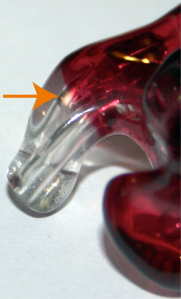 Depending on the colours chosen, you can see the wiring and drivers inside the shells as well as the small metal pipe in the bass tube (see image to right). This can be cool, but realistically there’s not a lot to see.
Depending on the colours chosen, you can see the wiring and drivers inside the shells as well as the small metal pipe in the bass tube (see image to right). This can be cool, but realistically there’s not a lot to see.
Other than seeing your choice of colours and inserts come to life, the design is quite straightforward. It’s an exact replica of the space inside your ear canal and outer ear moulded in acrylic and with a bunch of miniature drivers inside. I’m not suggesting it’s an easy achievement from Unique Melody – there’s a lot of design and technology built into a small space, but the end result is a solid, moulded piece of acrylic that’s deceptively simple on the outside.
Fit
Being custom moulded, the Miracles (or any CIEM) should fit beautifully and comfortably, but it’s possible that the moulds made by your audiologist could be imperfect. If that’s the case, you may have an experience like I did at first where the seal breaks on one (or both) sides during certain movements. For me, the seal on the right would break anytime I looked down (e.g. to read a book or look at my laptop), or if I tilted my head to the right (e.g. leaning against the wall of the train while trying to relax listening to music). It can be very off-putting and take you straight out of the music.
The good news is that a good mould will result in an incredibly comfortable CIEM. Now that they’re fixed and fitting properly, I can easily wear the Miracles for hours on end with no discomfort. Along with comfort, the perfect fit and seal means that, once the music is playing, the rest of the world disappears – isolation of sound is extreme. Loud sounds like alarms, announcements on trains / in airports are still audible, but background noise just ceases to exist.
Service
I’m writing this now so as not to leave a bad “after-taste” at the end of the review. The service I received from UM Australia (aka ACustoms) ranged from exceptional to really poor. Communication was inconsistent and sometimes inaccurate, and the first proposed solution to a fit issue I had resulted in a 4-5 week wait (from memory) with no joy at the end and another 6-7 week wait after that. I can’t speak to the reasons for the inconsistencies and there may be short-term issues, but it has definitely left me feeling like I won’t use their services again which is a shame because individually, everyone but 1 person I dealt with was really friendly and helpful in terms of their attitudes. It’s just a shame that their systems and processes seem to let down the overall experience. What makes it even more of a shame is how truly brilliant the product is. It’s a prestige, top-end item that fulfils all that it promises and deserves to be supported with an equivalent standard of customer service.
Sound
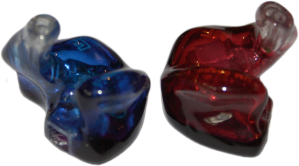 In the end this is what really matters and the Miracles do not disappoint! First impressions of these are that they deliver perfect sound across the entire frequency range. There’s plenty of detail without any fatiguing sibilance or harshness. There’s plenty of bass without any excess rumble or flab, and the midrange is solid and present without becoming thick and creamy or too dry and raspy.
In the end this is what really matters and the Miracles do not disappoint! First impressions of these are that they deliver perfect sound across the entire frequency range. There’s plenty of detail without any fatiguing sibilance or harshness. There’s plenty of bass without any excess rumble or flab, and the midrange is solid and present without becoming thick and creamy or too dry and raspy.
Pairing
The Miracles, like most multiple balanced armature IEMs are a bit picky about the device they’re paired with. Combined with a great source with low output impedance (<1 ohm ideally), they really sing, but you may find a slight loss of bass and increase in top-end when used with non-ideal devices. For example, I find they don’t pair perfectly with my desktop amp (Audio-gd NFB-5.2), iPod, or mobile phone, but are great with my portable amp (Tralucent T1). I’m still undecided about how well they pair with my USB DAC, the AudioQuest Dragonfly because on paper they are a match, but I hear a little bit of harshness when paired directly with the Dragonfly (i.e. not via an amplifier).
Bass
The bass from the Miracles is a revelation. It’s solid, full and punchy – much more so than I ever expected from an earphone. The Miracles manage to be punchy and tight while also having all the body and rumble you could need unless you’re a major basshead. Of course, as I’ve already touched on, this will depend on the source driving them. A poor pairing will strip the bass out of the Miracles, but that’s on the source, not the Miracles. They are absolutely up to the task of producing any bass I’ve ever heard in a recording and I’m yet to be disappointed by them when paired with the right source.
Mids
 The mids of the Miracles are subtle in a good way. With the stock cable (more on that later), the mids are well-placed and present, but not emphasised or forward like some high-end IEMs (e.g. Shure SE535). Vocals and instrumentals won’t jump out at you or get lost behind the rest of the music – they’re just there, right where they should be.
The mids of the Miracles are subtle in a good way. With the stock cable (more on that later), the mids are well-placed and present, but not emphasised or forward like some high-end IEMs (e.g. Shure SE535). Vocals and instrumentals won’t jump out at you or get lost behind the rest of the music – they’re just there, right where they should be.
Those coming from very warm, lush earphones or headphones may find the Miracles a bit lean at first, but to me they are just beautifully balanced rather than lean or analytical.
Highs
The highs on the Miracles are quite surprising. There’s nice brightness and oodles of detail, but it never seems to get harsh. Even with poor recordings, the Miracle seems to present the music tastefully and never hacks up your eardrums with sibilance and harshness. Yes, they will absolutely shine a light on any shortcomings in the recording, but they’re not ruthless like other headphones I’ve tried.
Presentation
This is where the Miracles really shine. So far they do everything exactly as I expected, but it’s their presentation that really blows me away again and again.
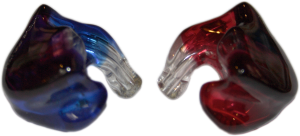 The Miracles manage to create a large, deep, and tall soundstage between your ears which stretches from ear to ear and from the top of your head down to your jaw. I am often blown away when I feel a guitar strumming in one ear – yes, I said feel, not hear. Somehow, they present not just sound, but texture and sensations which are rarely experienced when listening to earphones, let alone headphones.
The Miracles manage to create a large, deep, and tall soundstage between your ears which stretches from ear to ear and from the top of your head down to your jaw. I am often blown away when I feel a guitar strumming in one ear – yes, I said feel, not hear. Somehow, they present not just sound, but texture and sensations which are rarely experienced when listening to earphones, let alone headphones.
Instrument placement is perfect – clean, separate, and unforced. You don’t have to think about where instruments are placed, you just know. The experience is similar to my first “wow” moment with the Shure SE535s and yet so much better. It’s like you can mentally walk around between the band members and explore the stage with them. It only gets better with a change of cable…
Summary (Part 1)
For around $1000 you expect a massive amount from these little nuggets of acrylic and I think you’d be hard-pressed to be disappointed. Unless you have very specific tastes in sound signature (i.e. you like gobs of bass or an extremely lean, analytical experience) the Miracles should tick all the boxes.
If you’re buying them, be sure of a few things:
- You have the patience to wait
- You have a source or amp with <1 ohm output impedance
- You’re ready to disappear from the world for a while as you get completely absorbed in music you thought you already knew like the back of your hand
There are other great CIEMs out there, and the new JH13 packs some recent technology which may actually make it better than the Miracle while being comparable in sound signature so do your research before buying, but rest assured if you settle on the Miracles – they are an epic audio experience in a very small, extremely comfortable package.
Cable Changes
The detachable cable of the Miracles means that you can easily swap the stock cable for a massive range of custom options made of all different exotic metals and combinations. The socket used on the Miracles is common to most CIEM brands so it’s easy to find alternatives. Do be aware though that the Miracles use a recessed socket and not all cables will fit the recess even though they may use the same 2-pin design. Just double-check before laying down your dough.
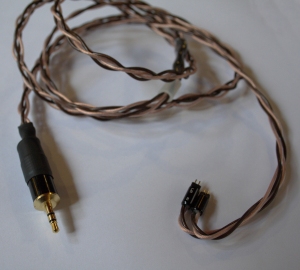 So far I’ve tried a couple of different cables with the Miracles, a silver cable which I think was from Chris_Himself from Headphonelounge (on Head-Fi.org). I bought it second hand so I am not completely sure. The sound with the silver cable was good, but brightened the signature of the Miracles more than I like. Some people would love it, but it wasn’t for me.
So far I’ve tried a couple of different cables with the Miracles, a silver cable which I think was from Chris_Himself from Headphonelounge (on Head-Fi.org). I bought it second hand so I am not completely sure. The sound with the silver cable was good, but brightened the signature of the Miracles more than I like. Some people would love it, but it wasn’t for me.
I bought the silver cable while I was waiting for the beast pictured to the right. It’s the DHC Symbiote SE Litz from Double Helix Cables and it’s an amazing piece of cable engineering, so much so that I’ll be doing a dedicated review of it soon.
In terms of its impact on the sound, the Symbiote SE Litz delivers essentially the same signature as the stock cable, but somehow does everything better. Every sound is smoother, cleaner, fuller, more detailed and better. I know that sounds like hyperbole, but I can’t describe it any better. There’s no individual element of the sound which jumps out to me, but everything is undeniably better.
Perhaps the biggest surprise is the impact those improvements have on the listening experience. After swapping to the DHC cable, I was listening to the same tracks I always have on my portable player (a selection of my favourites list of around 4000 tracks, all of which I know well) and noticed that I was listening to and hearing the lyrics of songs I’d never really paid attention to before.
It’s not like the DHC cable emphasised the midrange to make vocals more prominent – it just made everything so coherent and organic that it became like sitting at a live gig or recording session where all of the individual sounds came together perfectly and naturally making it easy to hear everything and take in the entire musical canvas.
The DHC cables require a significant outlay and there are a couple of pointers I’ll cover in the separate review (mainly the large size of the stock plug). They also have a long lead time because they’re handmade to order, but I am extremely comfortable recommending the Symbiote SE Litz cable with the Miracles as one of the most perfect pairings I’ve ever experienced. It won’t wow you upfront like the brightness and detail of silver cables might, but will continuously improve your listening experience and keep the Miracles silky, smooth, detailed, and incredible.
Summary (Part 2)
I’m really excited to continue using the Miracle + Symbiote combination and look forward to hearing my music in all new ways as I keep sifting through my collection. In future I’ll be trying some other CIEMs I think, but will be amazed to find anything more than subtle, incremental changes to performance. For now, I am comfortable saying that the Miracles + Symbiote are the greatest personal audio experience I have found so far (i.e. better than any headphones I’ve used as yet). The fact that you can take them anywhere you go is a massive bonus.
No doubt there are better products and combinations to be found out there, but I really can’t see it coming for the same money or less. If you’re looking to spend $1000-2000 on a great portable (or even home) earphone solution, these are a great option. The Miracles alone are around $1000 depending on the design options you choose and you can always choose to add the cable later for that extra little upgrade. The cable I bought was a big outlay, but worth every cent. Keep your eye out for the review…
 The Shure SE846 is Shure’s flagship IEM, sitting a step higher than the older, but still ongoing SE535. The SE846 sits significantly higher in price though at around $1000-1200 depending on where you shop and where you live. There are differing opinions about the SE846’s value compared to the SE535, but that comes down to two things: what you value in sound reproduction and which filter you use in the 846s, but I’ll get to that. Suffice to say for now, the 846s come three pairs of filters to tailor the sound to your tastes.
The Shure SE846 is Shure’s flagship IEM, sitting a step higher than the older, but still ongoing SE535. The SE846 sits significantly higher in price though at around $1000-1200 depending on where you shop and where you live. There are differing opinions about the SE846’s value compared to the SE535, but that comes down to two things: what you value in sound reproduction and which filter you use in the 846s, but I’ll get to that. Suffice to say for now, the 846s come three pairs of filters to tailor the sound to your tastes.






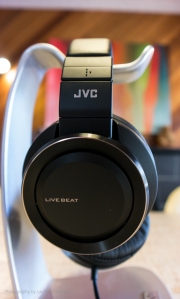

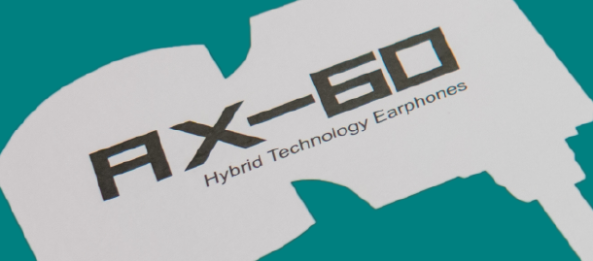
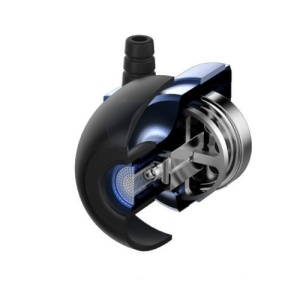
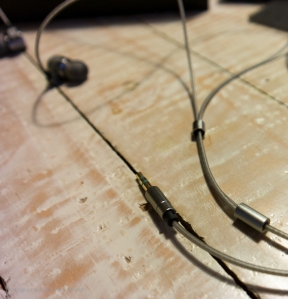
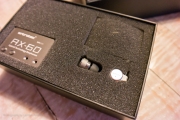
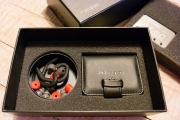
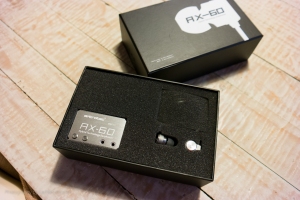
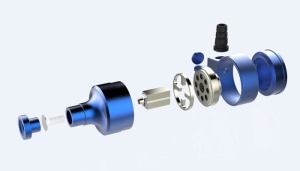
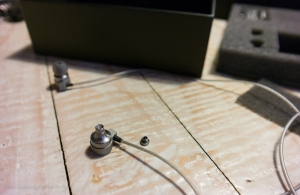
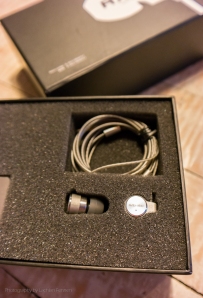



 When you order any CIEMs there are a few steps to go through regardless of which brand and model you choose. For this part of the review, I am referring to all brands and models, not just the Miracles.
When you order any CIEMs there are a few steps to go through regardless of which brand and model you choose. For this part of the review, I am referring to all brands and models, not just the Miracles.







